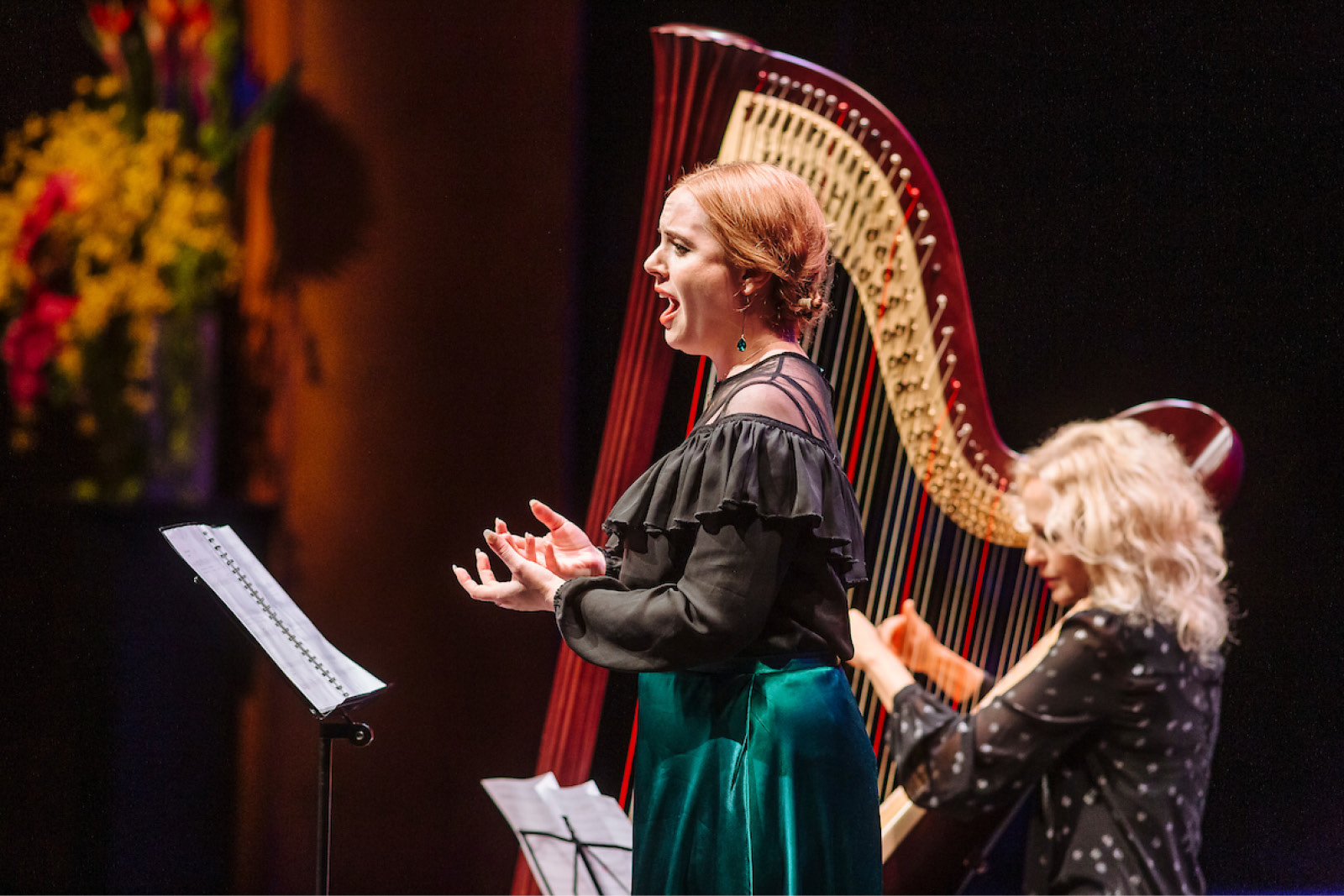The Australian Festival of Chamber Music’s Artistic Director Kathryn Stott might have retired the Festival’s Bach by Candlelight concerts, but Thursday evening was still devoted to the music of the baroque period – just with a few different composers sharing the spotlight. Thus the first concert of the evening, Baroque Around the Clock, was a smartly programmed conversation between baroque and 20th-century music, with modern explorations of Baroque ideas and forms presented alongside earlier examples.
 Lotte Betts-Dean and Ruth Wall at the Australian Festival of Chamber Music. Photo © Andrew Rankin
Lotte Betts-Dean and Ruth Wall at the Australian Festival of Chamber Music. Photo © Andrew Rankin
Mezzo-soprano Lotte Betts-Dean opened proceedings with John Dowland’s lute song Flow, my tears, with Ruth Wall’s harp standing in for the lute. Betts-Dean’s tone was pure, only lightly coloured by vibrato in the early verses, before blossoming in the third. Her diction was immaculate, and she gave a chilling edge to “Hark! You shadows that in darkness dwell” that bordered on a hiss. The Dowland was cleverly paired with Thomas Adès’ 1992 piano work Darknesse Visible – which the composer described as “an explosion” of Dowland’s In Darknesse Let Mee Dwell – given a detailed, mesmerising reading here by Aura Go. With stabbing accents, shimmering textures and lute-like tremolos, Go commanding a mood at once vast and intimate with deft control and sensitivity.
Perhaps the festival’s hardest working multi-instrumentalist, UK musician Roberto Carrillo-Garcia played guitar in this concert (he would be heard on viola da gamba later in the evening and then in a ripping rendition of Glière’s Intermezzo and Tarantella on double bass, with Stott on piano, the following morning), introduced a melody that would recur in the later Bellissimo Baroque concert. Manuel Maria Ponce’s Variations on Folia de Espana is a 20th-century take on the baroque ear-worm La Folia, giving it a complex, almost bluesy flavour. If there were a couple of moments where Carrillo-Garcia’s tone fell slightly short, his communicative sense of flair and musicality more than won the audience over.
American violinist Yura Lee continued the exploration of repeated themes or motifs with Heinrich Biber’s Passacaglia for solo violin, captivating the audience with the quiet, simple elegance of the descending four-note bass line and the multi-layered variations, which lilted dance-like in her hands. Some 300 years after Biber was writing, György Ligeti’s ironically composed Passacaglia ungherese (he was making fun of his students) uses a ground bass comprising all 12 notes of the chromatic scale. Harpsichordist Neal Peres Da Costa found in the work a compelling inevitability, as the textures became more complex, wringing from the music twinkling magic and astringent dissonance.
Australian wind quintet Arcadia Winds brought the concert to a close with perhaps the most famous love-song to baroque forms, Ravel’s six-movement dance suite for piano Le Tombeau de Couperin, in an arrangement by Mason Jones that takes the Fugue (unlike Ravel’s popular orchestration, which uses the Forlane) as the second of its four movements. The ensemble relished in the Ravel’s lively, motoring textures, and while the entire ensemble was in excellent form, David Reichelt’s flourishing oboe lines and Rachel Shaw’s athletic French horn in the final movement were particularly brilliant.
This was an intelligently constructed – but by no means dry – program, brought to life in intimate, affecting performances.
The Australian Festival of Chamber Music runs in Townsville until August 4. Read Limelight‘s full coverage here.











Comments
Log in to join the conversation.